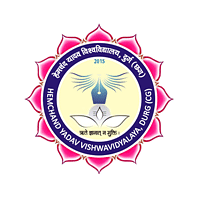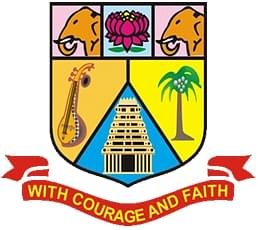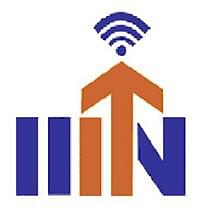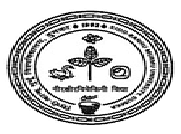Introduction
about Gender and Media Studies
Gender and Media Studies from top college is
an interdisciplinary field that examines the relationship between gender,
media, and society. It explores how media representations, practices, and
industries both shape and reflect cultural understandings of gender identity, roles,
and power dynamics. Here's an introduction to the key concepts and themes
within Gender and Media Studies:
Understanding
Gender:
Social
Construction of Gender:
Gender is not innate but
socially constructed. Gender roles, norms, and expectations vary across
cultures and historical contexts.
Intersectionality:
Gender intersects with other
social categories such as race, class, sexuality, and nationality to produce
complex and intersecting forms of oppression and privilege.
Media
Representations:
Portrayals
of Gender in Media:
Analysis of media
representations of masculinity, femininity, and non-binary identities.
Examination of stereotypes, tropes, and archetypes perpetuated in film,
television, advertising, and digital media.
Body Image
and Beauty Standards:
Exploration of media's role
in constructing idealized beauty standards and promoting unrealistic body
images. Impact on individuals' self-esteem, body image dissatisfaction, and
mental health.
Media
Industries:
Gender in
Media Production:
Study of gender dynamics
within media industries, including unequal representation and opportunities for
women and marginalized genders in production, directing, writing, and executive
positions.
Feminist
Media Activism:
Analysis of feminist
movements and advocacy efforts to challenge gender inequality and promote
diverse and inclusive representations in media content and production.
Audiences
and Reception:
Audience
Studies:
Research on how media
audiences interpret, negotiate, and resist dominant gender ideologies.
Examination of audience agency and the potential for media consumption to
challenge or reinforce gender norms.
Media
Literacy and Empowerment:
Promotion of media literacy
skills to critically analyze and deconstruct gendered media messages.
Empowerment through media production, activism, and alternative media
platforms.
Digital and
Social Media:
Gender
Online:
Exploration of gender
dynamics in digital and social media spaces. Analysis of online harassment,
cyberbullying, and gender-based violence, as well as opportunities for digital
activism and community-building.
Representation
and Visibility:
Study of how social media
platforms amplify diverse voices and experiences, including LGBTQ+ communities,
people of color, and other marginalized groups. Analysis of the role of
hashtags, memes, and viral content in shaping online discourse.
Policy and
Regulation:
Media
Policy and Regulation:
Examination of policies and
regulations related to gender representation, diversity, and inclusion in media
content and production. Advocacy for policy changes to address gender-based
discrimination and promote media equity.
Global
Perspectives:
Consideration of global and
transnational perspectives on gender and media, including cultural differences
in media representations and regulatory frameworks.
What is
admission process for Gender and Media Studies ?
The admission process for Gender and Media Studies typically involves several steps designed
to assess the candidate's academic qualifications, research interests, and fit
for the program. Here's a general overview of the typical admission process:
1. Research
Programs and Requirements:
Explore
Programs:
Research universities and
institutions offering programs in Gender and Media Studies or related fields.
Look into their curriculum, faculty expertise, and research focus areas.
Review
Admission Requirements:
Check the admission
requirements for each program, including prerequisites, application materials,
and deadlines.
2. Prepare
Application Materials:
Academic
Transcripts:
Gather official transcripts
from all post-secondary institutions attended, including undergraduate and, if
applicable, graduate coursework.
Letters of
Recommendation:
Request 2-3 letters of
recommendation from academic advisors, professors, or professionals who can
speak to your academic abilities, research potential, and fit for the program.
Statement
of Purpose:
Write a compelling statement
of purpose outlining your academic background, research interests, career
goals, and reasons for pursuing a degree in Gender and Media Studies.
Resume/CV:
Update your resume or
curriculum vitae to include relevant academic achievements, research
experience, publications, presentations, and professional experience.
Writing
Samples or Portfolios:
Some programs may request
writing samples or portfolios showcasing your research skills, critical
thinking abilities, and engagement with gender and media topics.
3.
Standardized Test Scores (if applicable):
GRE or
GMAT:
Some programs may require
Graduate Record Examination (GRE) or Graduate Management Admission Test (GMAT)
scores. However, many programs do not have standardized test score requirements
or may offer waivers for applicants with strong academic backgrounds or
significant research experience.
4. Complete
the Online Application:
Online
Application Form:
Complete the online
application form for each program you are applying to. Ensure all sections are
filled out accurately and completely.
Application
Fee:
Pay the application fee for
each program, if applicable. Some programs may offer fee waivers for eligible
candidates.
5. Submit
Application:
Upload
Application Materials:
Upload all required
application materials, including transcripts, letters of recommendation,
statement of purpose, resume/CV, writing samples or portfolios, and test
scores, through the online application portal.
Verify
Submission:
Verify that all materials
have been successfully submitted and received by the admissions office.
6. Await
Admission Decision:
Review
Process:
The admissions committee
will review your application materials, taking into account your academic
background, research interests, letters of recommendation, statement of
purpose, and writing samples.
Notification:
You will receive
notification of the admission decision via email or through the online
application portal. This may include an offer of admission, placement on a
waitlist, or a rejection.
7. Accept
Admission Offer:
Decision
Deadline:
If offered admission,
carefully review the details of the admission offer, including any financial
aid or scholarship offers, and the deadline for accepting the offer.
Acceptance:
Accept the admission offer
by the specified deadline and follow any additional instructions provided by
the program.
8. Prepare
for Enrollment:
Submit
Enrollment Materials:
Complete any additional
enrollment requirements, such as submitting official transcripts or financial
aid forms.
Orientation
and Registration:
Attend orientation sessions
and register for classes as instructed by the program.
What is
eligibility for Gender and Media Studies ?
Eligibility for Gender and Media Studies can vary depending on the institution,
the specific program, and the level of study (e.g., undergraduate, graduate).
However, here are some common eligibility criteria:
1.
Educational Background:
Undergraduate
Degree:
For graduate programs: A
bachelor's degree from an accredited institution is typically required. While
the specific undergraduate major may vary, programs often accept applicants
from diverse academic backgrounds, including communication, media studies, sociology,
women's studies, cultural studies, anthropology, or related fields.
Undergraduate
GPA:
Most programs require a
minimum undergraduate GPA, usually ranging from 2.5 to 3.0 on a 4.0 scale.
However, some competitive programs may have higher GPA requirements.
2. Work
Experience:
Professional
Experience:
While not always mandatory,
some programs may prefer applicants with relevant work experience or research
experience in areas related to gender studies, media studies, communication, or
social sciences. This experience could be gained through internships, part-time
jobs, or full-time employment.
3.
Standardized Test Scores (if applicable):
GRE or
GMAT:
Some graduate programs may
require Graduate Record Examination (GRE) or Graduate Management Admission Test
(GMAT) scores. However, many programs do not have standardized test score
requirements or may offer waivers for applicants with strong academic backgrounds
or significant research experience.
4. Letters
of Recommendation:
Recommendation
Letters:
Most graduate programs
require letters of recommendation from academic advisors, professors, or
professionals who can speak to the applicant's academic abilities, research
potential, and fit for the program.
5.
Statement of Purpose:
Statement
of Purpose:
Applicants are typically
required to submit a statement of purpose outlining their academic background,
research interests, career goals, and reasons for pursuing a degree in Gender
and Media Studies.
6. Writing
Samples or Portfolios (if applicable):
Writing
Samples:
Some programs may request
writing samples or portfolios showcasing the applicant's research skills,
critical thinking abilities, and engagement with gender and media topics.
Summary:
The eligibility requirements
for a program in Gender and Media Studies typically include a bachelor's degree
from an accredited institution, a minimum GPA, and, in some cases, relevant
work experience, standardized test scores, letters of recommendation, and a
statement of purpose. It's essential to carefully review the specific
requirements of each program to ensure eligibility before applying.
Additionally, undergraduate students interested in pursuing graduate studies in
Gender and Media Studies should consult with their academic advisors to ensure
they meet the prerequisites for admission to graduate programs.
What is
syllabus for Gender and Media Studies ?
The syllabus for Gender and Media Studies can vary significantly depending on the
institution, faculty expertise, and specific program focus areas. However,
here's a general overview of the typical components that may be included in the
curriculum:
Core
Courses:
Introduction
to Gender Studies:
Overview of key concepts,
theories, and debates in gender studies. Examination of the social construction
of gender, intersectionality, and feminist methodologies.
Media and
Representation:
Analysis of media
representations of gender, sexuality, and identity in film, television,
advertising, news media, and digital media. Exploration of stereotypes, tropes,
and counter-narratives.
Feminist
Theory and Media Criticism:
Study of feminist
theoretical frameworks applied to the analysis of media texts, industries, and
practices. Examination of feminist media criticism and media activism.
Gender,
Race, and Ethnicity in Media:
Intersectional analysis of
representations of race, ethnicity, and gender in media. Exploration of how
intersecting identities shape media representations and audience
interpretations.
Queer and
LGBTQ+ Media Studies:
Examination of LGBTQ+
representation in media, including the history of queer media, LGBTQ+
visibility, and activism in film, television, and digital media.
Media
Industries and Production:
Study of gender dynamics
within media industries, including issues of representation, diversity, and
power. Exploration of gender disparities in media production roles and
practices.
Digital
Media and Gender:
Analysis of gender dynamics
in digital and social media spaces. Study of online identity construction,
gender-based harassment, and opportunities for digital activism and
empowerment.
Sexuality
and Media Culture:
Exploration of media
representations of sexuality, sexual norms, and sexual identities. Examination
of how media contribute to the shaping of sexual attitudes and behaviors.
Elective
Courses:
Global
Perspectives on Gender and Media:
Study of gender and media in
global and transnational contexts. Examination of cultural differences in media
representations, production practices, and audience reception.
Media and
Body Image:
Analysis of media's role in
constructing body image ideals, promoting beauty standards, and perpetuating
body dissatisfaction. Exploration of body positivity movements and media
literacy interventions.
Media,
Politics, and Public Policy:
Study of gender dynamics in
political communication, media coverage of women politicians, and gendered
representations in political discourse. Examination of media's role in shaping
public opinion on gender-related policy issues.
Feminist
Media Activism:
Exploration of feminist
movements and advocacy efforts to challenge gender inequality and promote
diverse and inclusive representations in media content and production.
Media
Literacy and Education:
Promotion of media literacy
skills to critically analyze and deconstruct gendered media messages.
Development of media literacy interventions for schools, communities, and
online spaces.
Practical
Experience:
Internships
or Practicum:
Opportunities for students
to gain hands-on experience through internships, practicum placements, or
applied projects with organizations in the field of gender and media studies.
Capstone
Project:
Thesis or
Applied Project:
Completion of a
research-based thesis, professional project, or comprehensive exam
demonstrating mastery of key concepts and skills in gender and media studies.












